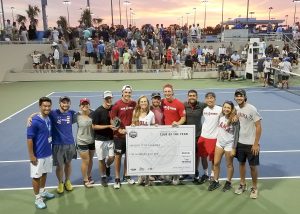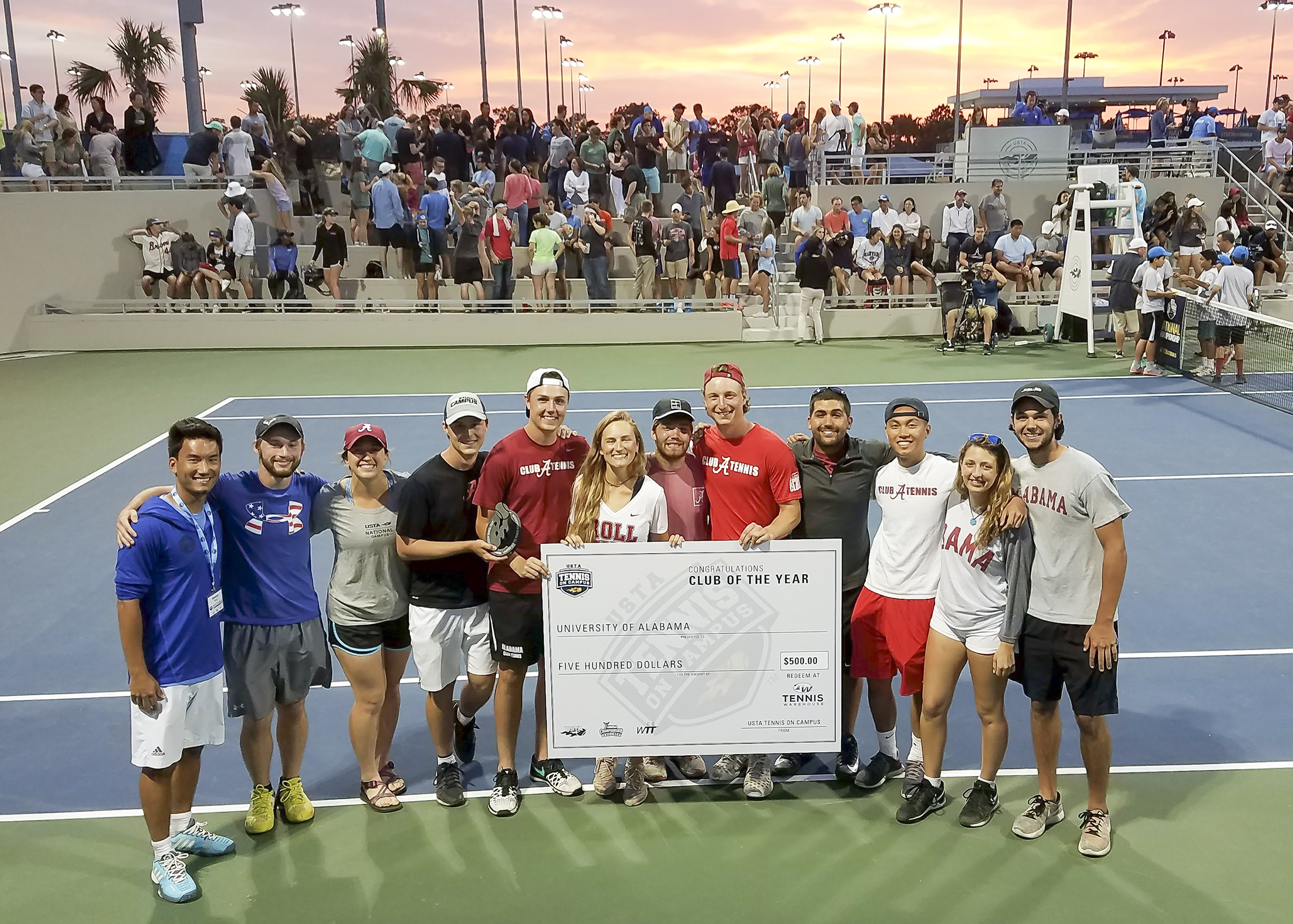
Shelby Akin could count the members of The University of Alabama club tennis team on her hands when she arrived on campus as a freshman.
At the time, the club participated in just two tournaments a year, had relatively low annual dues and had voluntary practices.
For Akin, a state champion tennis player in doubles and state runner-up in singles at Randolph High School in Huntsville, the club had greater potential both on campus and nationally.
“So we started to lay a basis of mandatory practices, which made everyone more invested in the club and increased the level of play,” said Akin, who would become vice president of the club during her sophomore year. “We made a point to include more club events, both tennis and social, to really build a team atmosphere. We increased dues to help fund some of the things we wanted to do, like travel to more tournaments.”
In just three years, Akin, who has served as president of the club the last three years, and her teammates have helped grow the club to 75 members and raise its touring schedule to seven tournaments a year. UA’s club tennis team has been to the USTA Tennis On Campus National Championships each of the last three years.
The club was honored recently for its growth and successes as the 2017 USTA Tennis On Campus Club of the Year. The USTA also named UA’s team “Southern Club of the Year” and Akin “ Southern Leader of the Year.”
“Growing membership has been due to the possibility of playing the game outside of club tennis,” said Akin, a journalism major. “A lot of our members use the club as a platform to hit with people and as a way to make friends with people who will play outside of our 7-9 p.m. practice times. It doesn’t matter if it’s 9 in the morning or 5 at night, there will be a pair of people playing out there at the Rec.”
Akin said the team, which includes UA students of varying levels of skill, has developed a “tennis culture” that’s built on the foundations of the game: competing against oneself and as a team, and developing a moral compass within the constructs of the game.
“We have dinners and movie nights, and we’ll get together and go to varsity tennis matches together,” Akin said. “A couple of people went to the Davis Cup together, and we didn’t sponsor that trip. We’ve got six or seven people who met their roommates through tennis.”
Akin said she, former club president Chase Golden, and Evan Enquist, who also coaches UA’s wheelchair tennis team, developed a comprehensive plan to grow the club three years ago. They decided to raise fees for dues from $50 to $100, then eventually up to $250 for the 2016-17 school year. They mandated a 75 percent attendance rate for the travel team and practice sessions of three to four times a week for tournament preparations.
The club’s leadership also got its funding in order through yearly club sports stipends and reimbursements through student resource provider The SOURCE, which will fund up to $2,000 in travel and $800 in equipment, Akin said.
Akin said the club’s outreach efforts contributed to its national recognition, particularly the work of Jared Halstrom, club vice president, who started free tennis lessons for fourth- and fifth-grade students at Oakdale Elementary School in Tuscaloosa. Members volunteer their time to teach the students the basics of the game after school two days a week.
Halstrom, who will replace Akin as club president next year, connected with Tuscaloosa Tennis Association’s Rocket Tennis program, which helped jump start their outreach to Oakdale. He also received a $400 grant from the USTA to aid in purchasing equipment for the program.
“I originally started this program because I knew that tennis wasn’t as big here as it is in my home state of New York,” Halstrom said. “Stereotypically, tennis is seen as a more affluent sport, and even though most communities have public tennis courts, the necessary equipment is minimal. So my goal was to target underserved populations to help it grow.
“And as an aspiring physician, my ultimate goal is to use tennis to provide children with an alternative form of exercise to fight Type 2 diabetes and obesity.”
Halstrom said he plans to continue the Oakdale program through the summer and hopefully expand it to different schools. He also hopes to increase fundraising efforts and incorporate home tournaments for members of the club who do not compete for the travel squad.
Contact
David Miller, UA Media Relations, 205/348-0825, david.c.miller@ua.edu
Source
Shelby Akin, student, shakin@crimson.ua.edu
